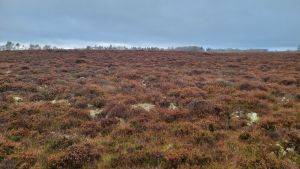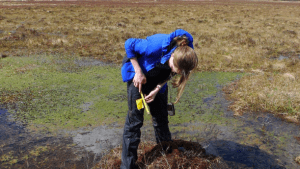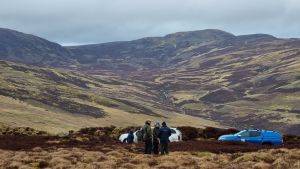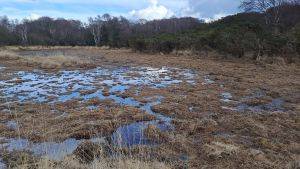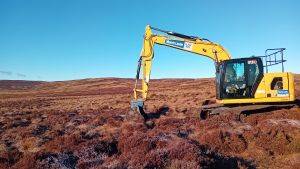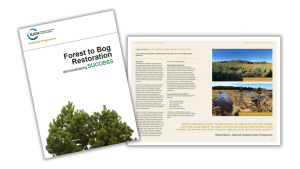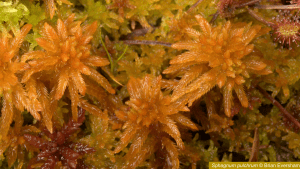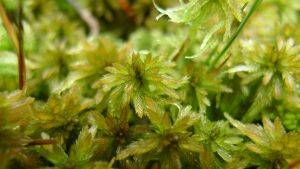IUCN UK Peatland Programme launches innovative Peatland Code at the World Forum on Natural Capital
An innovative mechanism to enable business investment in peatlands, taking into account its many valuable services to mankind, is to be launched today (Monday 23rd November) at the World Forum for Natural Capital in Edinburgh.
The Peatland Code is based on research undertaken at Birmingham City University and the University of Leeds, who were both recently awarded “quality rated” funding by the Higher Education Funding Council for England on the basis of the impact this research has already had.
Prof Mark Reed, who led research at Birmingham City University explained:
“The evocative call of a curlew or cotton grass quaking in the wind are sights many of us may associate with our often solitary, yet beautiful moorland landscape, blissfully unaware or unappreciative of the many benefits we derive from these unique peatland habitats.”
“Whilst providing valued homes for some of our rare and endangered wildlife, our peatlands also act as a huge store of carbon, locking up as much as half that found in the Amazon rainforest despite being a hundredth of its size.”
Peatlands are not just about carbon either, the IUCN Commission of Inquiry in 2011 highlighted their significant role in the storage of clean drinking water and in flood management in addition to the carbon and biodiversity benefits.
Long overlooked, these benefits are some of those on the agenda at this week’s World Forum on Natural Capital, which will see the launch of the Peatland Code, following a successful two year pilot. Carefully designed to ensure environmental credibility, the Peatland Code has been created by the IUCN UK Peatland Programme as a voluntary standard that quantifies carbon emission reductions of restored peatlands, so that companies can invest in pre-selected projects with confidence that their funds will return clear carbon benefits, helping them to meet corporate social responsibility targets.
Clifton Bain, Director for the IUCN UK Peatland Programme, is keen for business leaders to get in touch to show their commitment to safeguarding our natural resources:
“The Peatland Code provides businesses with a chance to lead on a sustainable approach to our planet. Currently the Code has been stringently designed with carbon benefits in mind, but it is very much a flexible approach, with the ability to later adapt to showcase the additional benefits of peatland restoration as knowledge in this area grows, and if required, fit with future Government work on natural capital and greenhouse gas accounting.”
With no prior financial incentive for land managers to restore peatlands, which have become degraded through damaging agricultural or forestry practices among other things, the Peatland Code should provide much needed funds to these communities in return for carbon, water and biodiversity benefits.
Simon Thorp is Director of The Heather Trust and has been working with other organisations, including the Moorland Association and Scottish Land & Estates, to promote peatland management to the owners and managers of land. He commented that:
“Increasingly, landowners and managers are willing to make management changes to improve the condition of their peatlands. The Heather Trust, in conjunction with the other organisations, hope that the principles set out in the Peatland Code are road tested with some major landowners to demonstrate its fit for purpose. Many of these landowners are also business leaders and would be able to consider both the willingness of business to supply funding, and the application of the payments to improve peatland.”
Supported by Government, the Peatland Code offers a route for private businesses to be part of meeting the ambitious target of one million hectares of peatlands to be restored by 2020 as set out by the Commission of Inquiry. A challenging, yet achievable target, which could make a huge impact on climate change in the UK: a loss of only 5% of our carbon store through damaged peatlands would equal the current total annual UK emissions for all anthropogenic activities.
Parliamentary Under-Secretary for DEFRA, Rory Stewart MP said:
“Our peatlands are immensely precious – we have some of the best peatlands in Europe. They are astonishing stores of carbon and a unique habitat for rare plants, insects and birds. The UK Peatland Code will play a crucial role in helping to mitigate climate change and protect our wildlife and water quality for future generations to come.
“Peatland restoration is also a real opportunity for businesses keen to invest in the environment and these wild and evocative landscapes”.
Leading conservation organisations, who will oversee some of the restoration projects that are already lined up waiting for funding, are positive about the introduction of the Code:
Stephanie Hilborne OBE, CEO of The Wildlife Trusts said:
“The Peatland Code represents a new way for conservationists and businesses to work together to achieve quantifiable benefits for climate change, local communities and wildlife across Britain.”
Peatland restoration has been both tried and tested here in the UK and is known to be effective. It is currently supported by various Government grants, which will be complemented by further business investment through the Code. To find out more about the Peatland Code visit www.iucn-uk-peatlandprogramme.org.

